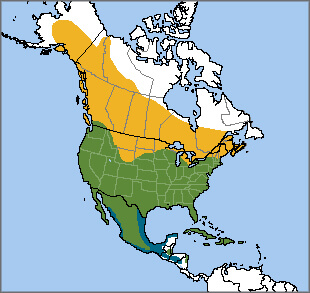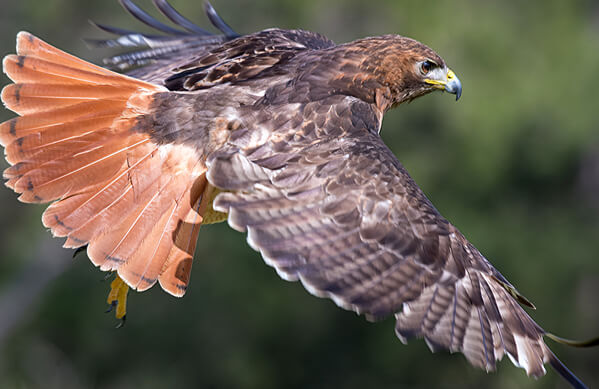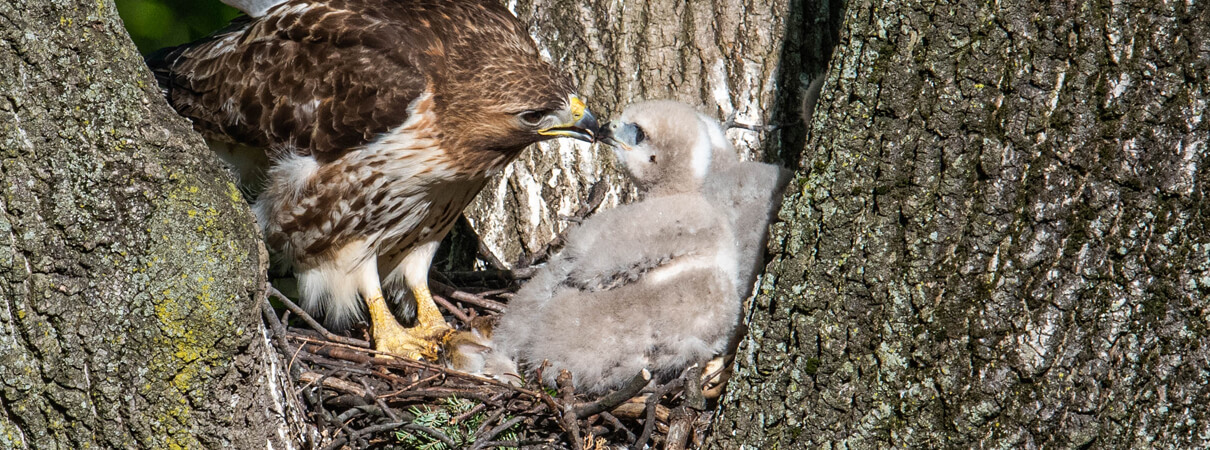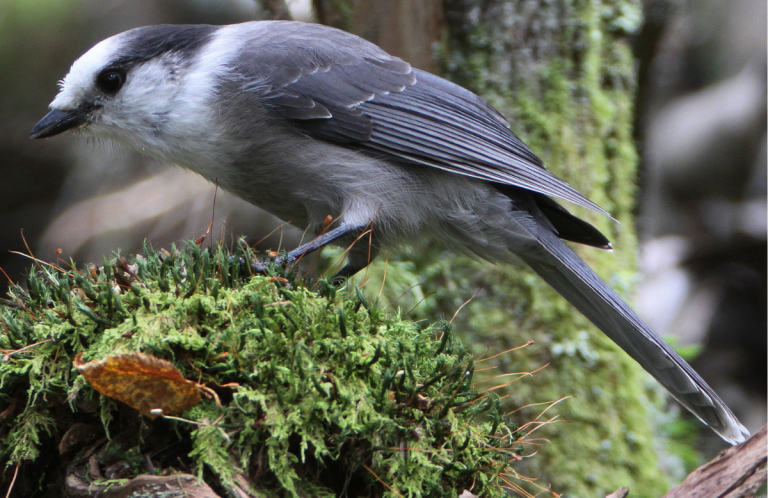 One of the largest and most common birds of prey in North America, the Red-tailed Hawk is a familiar sight even to nonbirders. It often thrives in suburbia and is seen along roadsides perched atop tall poles. This handsome raptor is the epitome of its genus, Buteo, with its wide wings, short tail, and chunky build.
One of the largest and most common birds of prey in North America, the Red-tailed Hawk is a familiar sight even to nonbirders. It often thrives in suburbia and is seen along roadsides perched atop tall poles. This handsome raptor is the epitome of its genus, Buteo, with its wide wings, short tail, and chunky build.
Red-tailed Hawks have some unique features as well: a belly band formed of dark, vertical streaks, dark patagial markings (the patagium is the area running along the leading edge of the underwing), and the eponymous reddish-brown tail.
This big hawk is also a talented voiceover artist, standing in for one of the most often-seen raptors on television.
Red-tailed Voiceovers
The Red-tailed Hawk's long, raspy call is often heard on TV and in movies when a Bald Eagle is shown. In reality, the Bald Eagle has a chittering, high-pitched call, which apparently doesn't sound imposing enough to go along with its tough appearance. Enter the Red-tail, whose call has been deemed macho enough to substitute for the eagle's. It's used as a substitute so often that most people don't know what a Bald Eagle really sounds like! You can compare the two below.
(Audio by Tayler Brooks XC34863, accessible at www.xeno-canto.org/34863 and Paul Marvin XC165314, accessible at www.xeno-canto.org/165314)
Highly Heterogeneous Hawk
There are 14 recognized subspecies of Red-tailed Hawk, which vary most noticeably in color and shade. One subspecies in western North America, the Harlan's Hawk, has an all-dark body and is considered a separate species by some ornithologists. Some subspecies lack the typical field marks of the species, such as the dark belly band and reddish tail, making for tricky identification challenges. Juvenile birds can add to the confusion; instead of a red tail, immatures bird's show narrow brown-and-white bars on their tails.
Unlike the related Swainson's Hawk, which migrates long distances, many Red-tailed Hawks are resident. Others migrate relatively short distances, with northern populations tending to move south during the fall. Migratory behavior in this species is significantly influenced by weather, particularly snow cover and food supply.
Dietary Grab-Bag
Red-tailed Hawks feed on a wide variety of prey, although their diet primarily consists of rodents and rabbits, with reptiles and birds rounding out the diet. Red-tailed Hawks are also variable in their hunting styles, sometimes using a “sit-and-wait” strategy and at other times soaring or hovering high in the air to spot prey, then grabbing it from a high-speed stoop.
Faithful Mates
Red-tailed Hawks usually begin breeding when they are three years old. They are monogamous, remaining with the same mate for many years. In one striking courtship ritual, a male and female hawk fly together, diving and rolling in synchrony, then locking talons and falling together before splitting apart again.
These hawks usually only change mates when their original mate dies. One famous pair, Pale Male and Lola, nested on a Fifth Avenue building in New York City for years, to the delight of thousands of birders and city residents. As with other birds of prey, such as the Golden Eagle and Cooper's Hawk, females are larger than males.
Red-tailed Hawks build large stick nests that may be reused for several years. Urban Red-tails often take advantage of building ledges. Great Horned Owls may compete with Red-tailed Hawks for nest sites. Each species has been known to kill the young and destroy the eggs of the other while trying to take over a nest site.
Keeping Red-tails on the Wing
Unlike many other North American bird species, Red-tailed Hawks have increased and extended their range over the last century, likely the result of increased habitat created by human settlement, including fragmented woodlands, open areas, and suburban sprawl. The adaptable Red-tailed Hawk can take advantage of all these habitats.
Although not threatened, Red-tailed Hawks still face a gamut of dangers, including collisions with cars, buildings, and wind turbines. Electrocution on powerlines and lead poisoning are responsible for many hawk deaths, and rodenticides, heavily used in cities to control rats, fatally poison many city-dwelling Red-tails.
ABC has many programs that take on these threats, from our Wind Energy program to our Conservation Advocacy division. For example, after pressure from ABC and other groups, Reckitt Benckiser, parent company of the d-CON brand, pulled one of its deadliest rodenticides from retail store shelves in 2014.
Donate to support ABC's conservation mission!




















































